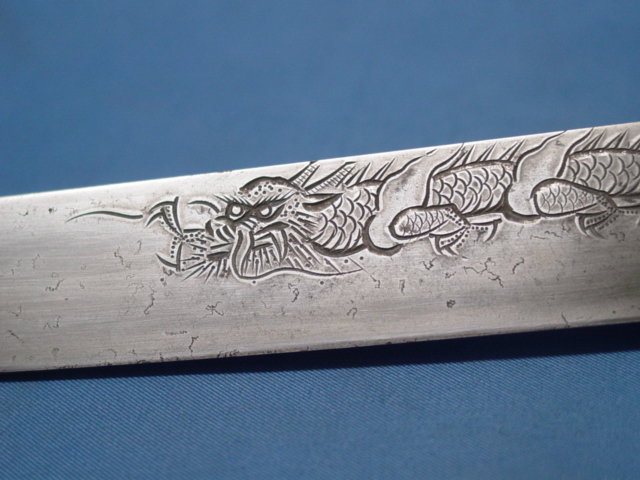Japanese Samurai Tanto Blade -
This is a Japanese edge weapon used during the WWII period. The actual manufacturing date of the Tanto blade dates
back to the late 1800's.
Information provided here allows the enthusiast to identify the Japanese edge weapon. In
addition, data is provided to map the value of the collectibles over a period of time. This information is brought
to you courtesy of MilitaryItems.com , a provider
of high quality militay collectibles.

The Tanto knife was the smallest blade the Samurai took into combat. The small stature made it ideal for close combat
fighting where wielding a large sword is not an option. The same knife was also used for commiting suicide.
The Tanto knife shown on this page is housed in a wooden case. This enclosure was normally used as a transitional
housing while the blade waited to be mounted in more proper attire.

|
This page is a recognition and identification guide for Samurai swords.
Multiple detailed photos of a specific sample are provided. Descriptions point
out clearly defined points that should be noted.
One of the most commonly asked questions is "How much is my Samurai Sword worth?".
A price guide is included here to address this question. The value of the swords is
reviewed over a period of several years. A trend can be observed. The present worth
of the edge weapons in the collector's market is illustrated.
This service is provided free of charge to the visitor/enthusiast courtesy of
MilitaryItems.com,
a company dedicated to the preservation of military history and to providing quality
military antiques and collectibles to museums, institutions and the general public.
|
|

The blade has a beautifully engraved dragon figure. This is a show of workmanship as the dragon is composed of a series
of strikes performed by the master. making a mistake here could cause the blade to be thrown away.

The handle of the Tanto has a nicely inlayed white diamond section made from bone. This part frames the hole where the
pin is inserted. Removing the pin causes the blade to be separated from the handle.
The texture of the handle is nice and smooth. The coloring is consistent all throughout. A black band is painted at the
throat of the scabbard.


The tang has a single hole drilled near the top. This is where the The handle pin passes through in order to
secure the blade to the handle. The very end of the tang has a rounded finish.
A single marking is applied to the tang.


| 




